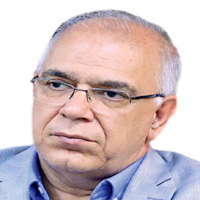Evaluation of Women’s Reproductive Health Status After the 2017 earthquake in Kermanshah, Iran
Women are at higher risk of death during disasters due to physical, biological, psychological, and cultural differences. After a disaster, they experience more miscarriages, premature births, inadequate fetal growth, low birth weight, sexual violence, and unwanted pregnancies. This study aims to investigate the reproductive health status of women affected by the 2017 earthquake in Kermanshah, Iran.
This descriptive cross-sectional study was conducted in 2018. The study population consists of women aged 15-49 years (Mean age=31.7 years) living in Sarpol-e Zahab, Javanrood, and Thalas Babajani towns in Kermanshah city affected by the earthquake in 2017. The questionnaire used for assessing the status of reproductive health in women was the Reproductive Health Assessment Questionnaire for Women of Reproductive Age, which has already been localized in Iran and its reliability and validity have been confirmed. Native Kurdish language experts completed the questionnaires on behalf of 396 participants. Descriptive statistics were used to describe the variables.
It was found that 42.4% of women complained of abnormal menstruation and 34.09% of limited menstrual hygiene materials. Sixty women were pregnant at the time of the earthquake, all of whom gave birth in hospital; two had miscarriages, two had premature births, and one had stillbirth. Urinary tract infection was the most common problem (21%) in pregnant women. Moreover, 48% of women used contraceptive methods after the earthquake, the most commonly used method was the use of contraceptive pills (23%). Access to contraception methods was difficult for 14.4% of them after the earthquake. Furthermore, 25% had experienced violence after the earthquake; of these, 30 reported physical violence, 86 verbal violence, and 13 sexual violence.
The control of pregnancy and safe delivery in earthquake-affected areas of Kermanshah is relatively acceptable; however, the provision of reproductive health services seems to be challenging. It is recommended to pay attention to the menstrual hygiene of women and regular distribution of contraceptives (despite the current population growth plan), address sexual acts of violence, and develop a protocol to support the victims.
- حق عضویت دریافتی صرف حمایت از نشریات عضو و نگهداری، تکمیل و توسعه مگیران میشود.
- پرداخت حق اشتراک و دانلود مقالات اجازه بازنشر آن در سایر رسانههای چاپی و دیجیتال را به کاربر نمیدهد.


